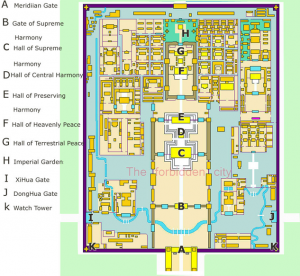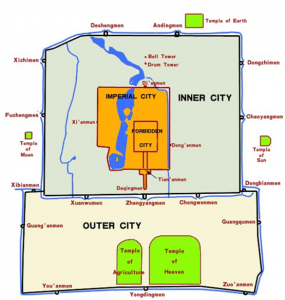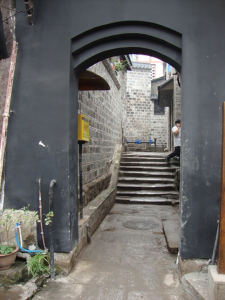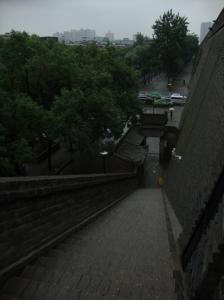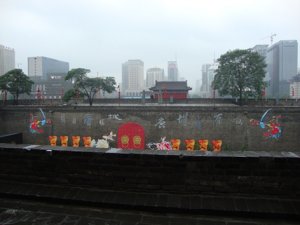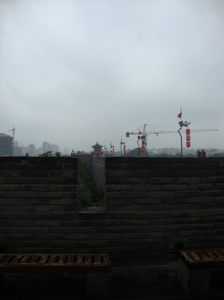Certainty and fallacy….
What is certain, is that within People’s Republic of China, digital space is governed very similarly to physical space, with equivalent extent of constraints and laws placed and enforced in ‘real space’. In one sense, this approach is progressive as the PRC treat the unquantifiable notion of ‘digital space’ – which we often disregard in the West as not even ‘space’, or an ‘other space’, such as within Foucault’s definition of heterotopia [1]. This ‘other’ space, has become the space within our phone, computer, television and Kindle that we ‘occupy’ more and more – should we not abide the same courtesies and regulations as in everyday walled space?
As outlined as the PRC’s governmental white paper, which can be read on the PRC State Council’s web-site [2], the government communicates that it seeks to promote free speech, movement and exchange online. However, the situation online is very much one of close control and inspection as outlined in my last post. When internet users in the PRC attempt to enter Western social networking or blogging sites, or in fact any sites deemed with inappropriate content by the government, the user is re-directed to another ‘safe’ site, or a notice comes up advising the ‘netizen’ that the server has timed out. Similarly internal social networking sites in the PRC, are closely regulated by government officials. What is certain and commonplace is that you will be regularly told such a fallacy about why you cannot enter a digital space.
Prior to my six week residency in China, I had researched into how historical architecture and town planning from the Ming Dynasty functioned on this system on this very system of hierarchical control. Within the PRC, Ming Dynasty town layouts from the Empire of the Great Ming (from 1368 to 1644) form the basis of many ancient cities and towns across China. The structure of the walled cities all follow a pattern similar to the Forbidden City in Beijing, which consist of an Outer City, Inner City, Imperial City and Forbidden City. Persons were carefully classed and kept strictly to movement within certain areas of the overall city, with only the most important people at the top of the social hierarchy being able to access the centre of the city municipality. This walled formation still exists at many of the main cities and towns, although gateways and rules on physical movement are generally no longer adhered to.
In Sichuan Province, I spent time visiting the structures of the walled towns of CiQiKou and Huangdong Complex. The original structures of gateways still remain between separate areas of winding walkways in inner, outer and central sections, although people can move freely between physical spaces.
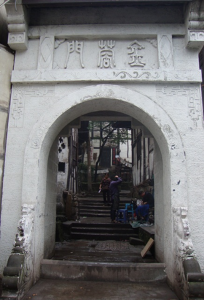
Similarly, I also visited the walled city of Xian, which was built in the Chang’an period prior to the Ming Dynasty, with the centre of the city formed around a walled rectangular configuration. Xian, in Shaanxi Province follows the structure of a series of external and internal walls, and historically entrances and exits were guarded with serious consequences. In many situations the walled structures, arenow glorified as successful tourist attractions, and are one of the few examples of historical architecture amongst the rapidly growing high rise skyscrapers.
In one sense, the situation of control over individual’s movement in the aforementioned walled historical cities would be deemed as truthful, as circumstances are made clear to all inhabitants of any cause and effect of movement, as well as awareness
of social positioning. The current situation of online control by the PRC appears as telling a recurring fallacy to its occupants when attempting to enter certain spaces online. However, all PRC nationals understand that the information given by the government is a lie; thus permanently reinforcing the dissolved meaning of any information labelled as a ‘truth’ or ‘fallacy’.
An original intention in my enquiry, was to highlight that within such an on-going situation of historical governmental control – history was clearly repeating itself from the physical to the digital. However, from the physical walls and barriers, to the current ‘re-direction’ and ‘network timeout’, it is evident that, as Mark Twain outlines, ‘History does not repeat itself, but it does rhyme’[3]. There are patterns, and comparisons, but differing frameworks and social issues. But how does the control online change the experience of physical space and cities within the PRC? How does this control of movement digitally enforce or dissipate knowledge in an online era? And is there hope for
a democratic or libertarian approach to digital space within the PRC, or is this idealised notion of the internet outmoded and unrealistic anyway?
[1] Michel Foucault. Of Other Spaces (1967), Heterotopias. http://foucault.info/documents/heteroTopia/foucault.heteroTopia.en.html.
[2] Information Office of the State Council of the People’s Republic of China. June 8,2010, Beijing http://www.china.org.cn/government/whitepaper/node_7093508.htm
[3] Mark Twain, The Jumping Frog: In English, Then in French, and Then Clawed Back into a Civilized Language Once More by Patient, Unremunerated Toil, illustrated by F. Strothman, New York and London, Harper & Brothers, Publishers, MCMIII,p. 64.
